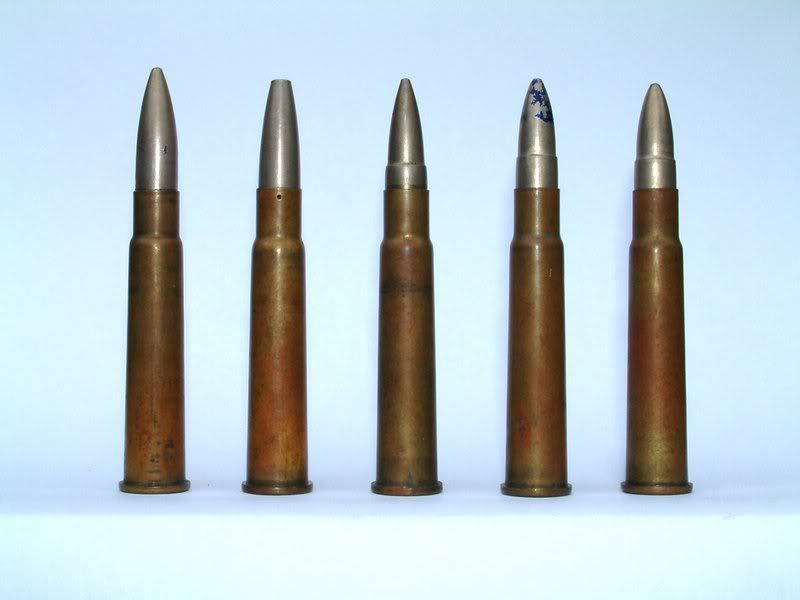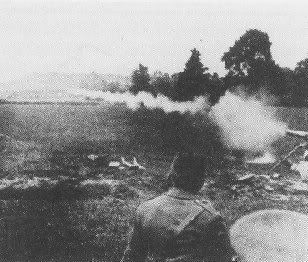British Ordnance Collectors Network
You are using an out of date browser. It may not display this or other websites correctly.
You should upgrade or use an alternative browser.
You should upgrade or use an alternative browser.
ore .303
- Thread starter TonyE
- Start date
Anyone have a picture of Buckingham Mark 3 bullet? Or knows it's overall dimensions (speciali bullet height)?
Is Buckingham Mark 3 visually similar (specially, does Buckingham Mark 3 have screw plug in the bottom of the bullet like B.Mk VI) to Incendiary B.Mk VI(.Z)?
Best wishes,
Mario Uus,
Estonia.
Is Buckingham Mark 3 visually similar (specially, does Buckingham Mark 3 have screw plug in the bottom of the bullet like B.Mk VI) to Incendiary B.Mk VI(.Z)?
Best wishes,
Mario Uus,
Estonia.
TonyE
HONOURED MEMBER RIP
First my apologies as I had the Buckingham Marks II and III captioned the wrong way round in my post. The Mark III Buckingham has the flat nose.
To answer the question, the Buckingham Mark II (pointed nose) did not have a screw base like the Mark VI. The base was sealed with solder. Bullet weight was 137grns and length was 1.36" (34.6mm)
The Mark III was similar with a soldered base and weighed 147grns. Length was 1.39" (35.5mm)
Both bulets can be further identified by having one or two small holes in the side of the bullet below the case line filled with fusible metal.
It would be very likely that in Estonia you would find pointed Buckingham Mark II type bullets made by Kynoch (typical headstamp K27 VIIB) as these were supplied on contract to the Estonian Air Force.
Regards
TonyE
To answer the question, the Buckingham Mark II (pointed nose) did not have a screw base like the Mark VI. The base was sealed with solder. Bullet weight was 137grns and length was 1.36" (34.6mm)
The Mark III was similar with a soldered base and weighed 147grns. Length was 1.39" (35.5mm)
Both bulets can be further identified by having one or two small holes in the side of the bullet below the case line filled with fusible metal.
It would be very likely that in Estonia you would find pointed Buckingham Mark II type bullets made by Kynoch (typical headstamp K27 VIIB) as these were supplied on contract to the Estonian Air Force.
Regards
TonyE
TonyE
HONOURED MEMBER RIP
Not ignorance at all..
Mr.J.F.Buckingham, of Coventry, was an engineer who invented one of the first effective incendiary bullets. Essentially, the bullet was filled with phosphorus and sealed with a small hole in the side of the bullet that was filled low melting point (fusible) metal. When the bullet was fired the friction in the bore melted the metal and when the bullet exited the barrel it trailed phopshorus through the hole which ignited on contact with the air and left a white smoke trail.
On striking the target the bullet broke up spilling burning phosphorus which in turn ignited the target.
The original type was introduced in 1915 and there were three Marks during the war followed by the Mark IV introduced in 1928 and in use until about 1943. The identifier "B" for British incendiary ammunition stems from the initial of Buckingham.
The term Buckingham has come to be a generic used for any phosphorus incendiary. Kynoch made Buckingham rounds in many calibres throughout the 1920s and 1930s for export.
Regards
TonyE
Mr.J.F.Buckingham, of Coventry, was an engineer who invented one of the first effective incendiary bullets. Essentially, the bullet was filled with phosphorus and sealed with a small hole in the side of the bullet that was filled low melting point (fusible) metal. When the bullet was fired the friction in the bore melted the metal and when the bullet exited the barrel it trailed phopshorus through the hole which ignited on contact with the air and left a white smoke trail.
On striking the target the bullet broke up spilling burning phosphorus which in turn ignited the target.
The original type was introduced in 1915 and there were three Marks during the war followed by the Mark IV introduced in 1928 and in use until about 1943. The identifier "B" for British incendiary ammunition stems from the initial of Buckingham.
The term Buckingham has come to be a generic used for any phosphorus incendiary. Kynoch made Buckingham rounds in many calibres throughout the 1920s and 1930s for export.
Regards
TonyE


